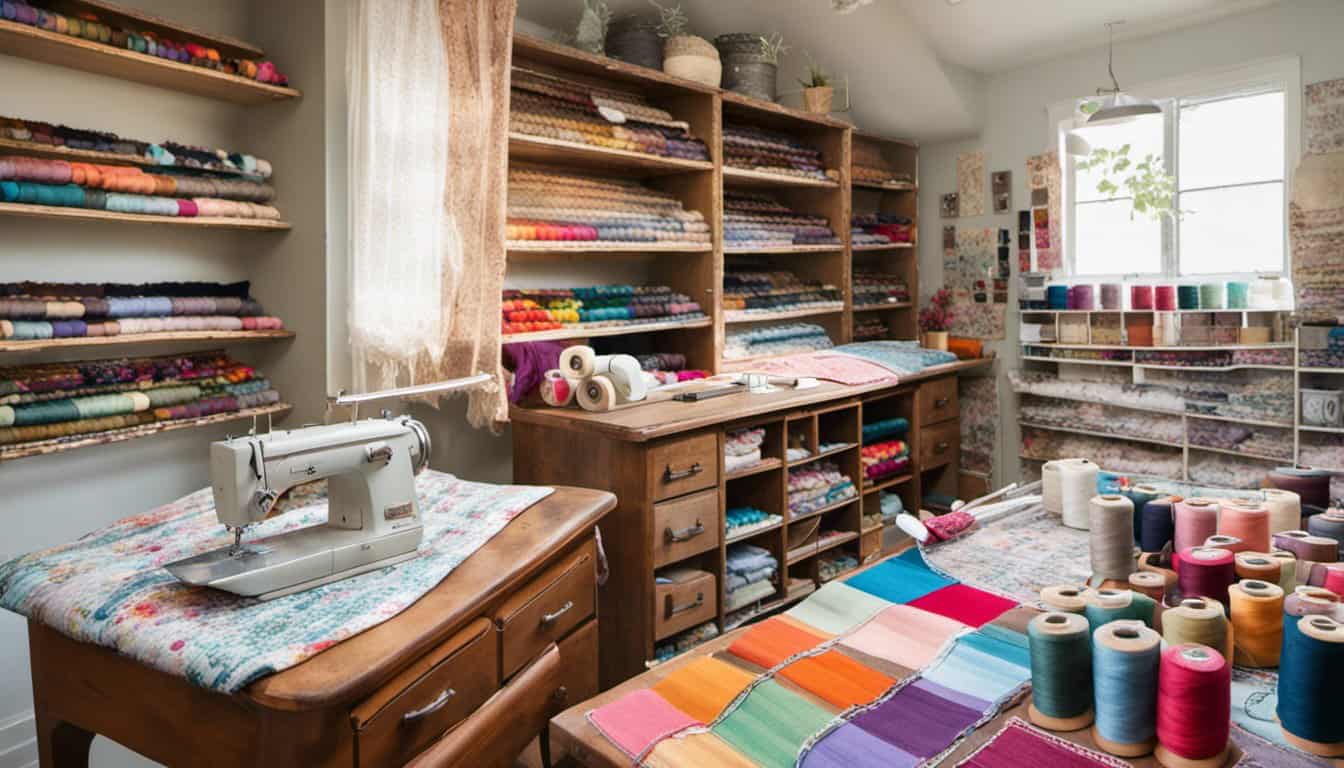Are you looking for a new hobby that allows you to express your creativity and make something beautiful? Look no further than sewing! Sewing is not only a practical skill, but it is also a form of art and craft that can bring joy and fulfillment to your life. Whether you’re a complete beginner or have some experience, sewing offers endless possibilities to create unique and personalized items. In this article, we will explore the world of sewing arts and crafts and discover why it is a fantastic hobby to dive into.
If you’ve ever admired handmade clothing, accessories, or home decor items and wondered if you could make them yourself, sewing is the answer. With a needle, thread, and some fabric, you can turn your creative visions into reality. Sewing allows you to customize your creations to suit your personal style, making each piece truly one-of-a-kind. Whether you want to sew a dress, a quilt, or a set of curtains, the possibilities are endless when it comes to sewing arts and crafts.
Not only is sewing a fun and rewarding hobby, but it also offers numerous benefits for your mental well-being. Engaging in sewing can help reduce stress and anxiety, as it allows you to focus on a creative task and immerse yourself in the present moment. The rhythmic motion of sewing can be meditative and calming, providing a sense of relaxation and mindfulness. Additionally, seeing your finished projects can boost your self-esteem and sense of accomplishment. So why not pick up a needle and thread and start sewing your way to a happier and more fulfilled life?
The History of Sewing
Sewing has a long and fascinating history that dates back thousands of years. It is often considered one of the oldest forms of art and craft. From the very beginning, people have used needles and thread to create functional and decorative items. Let’s take a journey back in time to explore the rich history of sewing.
Ancient Origins
Believe it or not, sewing can be traced back to the Paleolithic era, around 30,000 BCE. The earliest evidence of sewing comes from small stone needles found in archaeological sites. These ancient needles were likely used to sew animal hides together for clothing and shelter.
Early Techniques
As civilizations advanced, so did sewing techniques. In ancient Egypt, sewing was an integral part of society. The Egyptians used fine linen thread and developed intricate techniques, such as appliqué and decorative stitching. Sewing was not only practical but also a means of self-expression and status.
Industrial Revolution and Beyond
The Industrial Revolution in the 18th century brought significant changes to the world of sewing. The invention of the sewing machine revolutionized the textile industry and made sewing more accessible to the masses. The sewing machine, originally patented by Elias Howe and later improved by Isaac Singer, increased productivity and transformed the way garments were produced.
Modern Sewing
In recent years, sewing has experienced a resurgence in popularity. With the rise of the DIY movement and the desire for unique and sustainable clothing, more and more people are taking up sewing as a hobby. Sewing machines have become more advanced, offering a wide range of features and capabilities. Additionally, the internet has made it easier than ever to access patterns, tutorials, and inspiration for sewing projects.
Sewing continues to be a beloved form of art and craft. Whether you’re sewing garments, quilts, or home decor, the possibilities are endless. The history of sewing is a testament to how this ancient practice has evolved and adapted throughout the ages.
Sewing as a Form of Art
When it comes to sewing, it’s not just about creating practical and functional items. Sewing is truly a form of art that allows you to express your creativity and showcase your unique style. From clothing to home decor, sewing gives you the opportunity to transform ordinary fabrics into extraordinary pieces.
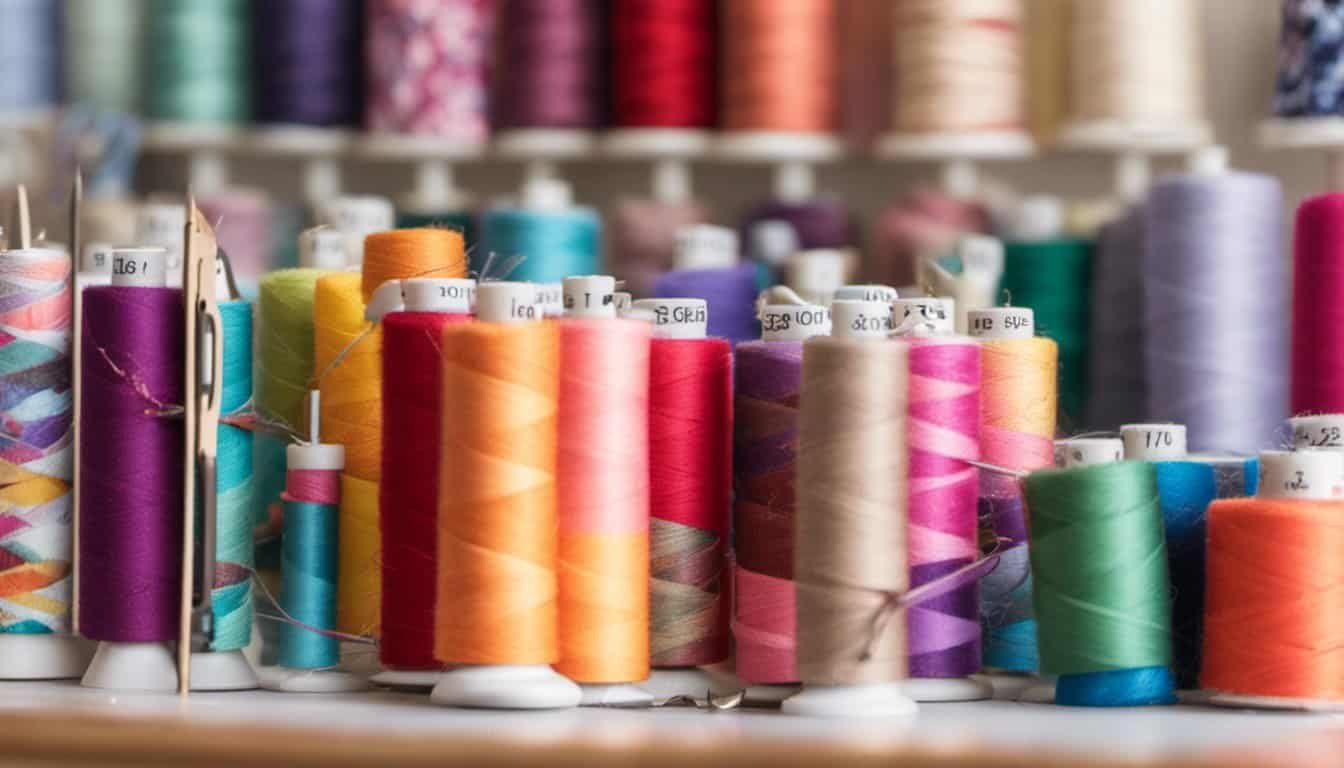
With a needle and thread, you have the power to bring your vision to life. You can choose from a vast array of fabrics, colors, and patterns to create something that is truly one-of-a-kind. Whether you’re designing a stunning evening gown or sewing a simple apron, each stitch is an expression of your artistic talent.
One of the most beautiful aspects of sewing as an art form is the ability to customize and personalize your creations. You can add intricate embroidery, delicate lace, or eye-catching embellishments to make your sewing projects truly stand out. It’s like painting on fabric, where your needle becomes your brush and the fabric is your canvas.
Sewing also offers endless opportunities for artistic experimentation. You can play with different textures and fabric combinations to create unique and visually appealing designs. You can experiment with various sewing techniques and patterns to push the boundaries of what is possible with fabric.
Moreover, sewing as an art form allows you to tap into your imagination and bring your wildest ideas to life. You can let your creativity flow freely and create pieces that reflect your personal style and taste. Whether you prefer classic elegance or bold and eclectic designs, sewing gives you the freedom to express yourself.
Sewing is not just a hobby or a craft. It is a form of art that allows you to express your creativity and showcase your unique style. From clothing to home decor, sewing offers endless opportunities for artistic exploration and self-expression. So grab your needle, thread, and fabric, and let your imagination soar as you create beautiful works of art through sewing.
Introduction to Different Types of Sewing Techniques
« Unveiling the Surprising Secrets: How Sewing Machines Can be a Game-Changer During Pregnancy
Discover the jaw-dropping benefits of reusing sewing patterns! You won’t believe how it saves money, reduces waste, and unlocks unlimited style possibilities »
When it comes to sewing, there’s a whole world of techniques waiting for you to explore. Whether you’re a beginner or an experienced sewist, knowing various sewing techniques can help you elevate your projects and add that special touch. In this section, we’ll introduce you to some popular sewing techniques that can take your creations to the next level.
Appliqué
Appliqué is a technique where fabric pieces are layered and sewn onto a base fabric to create decorative designs. It allows you to add vibrant colors, intricate patterns, and even pictures to your projects. From clothing to home decor items, the possibilities are endless with appliqué.
French Seam
If you’re looking for a neat and clean finish on the inside of your garments, French seams are the way to go. This technique involves enclosing the raw edges of the fabric within the seam itself, resulting in a tidy and polished look. It’s perfect for lightweight fabrics or when you want to give your projects a professional touch.
Bias Binding
Bias binding is a versatile technique used to finish raw edges or add decorative detail. It involves cutting fabric on the bias (diagonal) grain, which gives it flexibility and allows it to curve smoothly around curves and edges. Bias binding can be used to finish garments, quilts, or even create straps and ties.
Smocking
Smocking is a beautiful technique that creates raised decorative patterns on fabric. By gathering fabric and stitching it in specific patterns, you can achieve a textured and visually appealing design. Smocking is often used in children’s clothing, but it can add a touch of elegance and whimsy to adult garments as well.
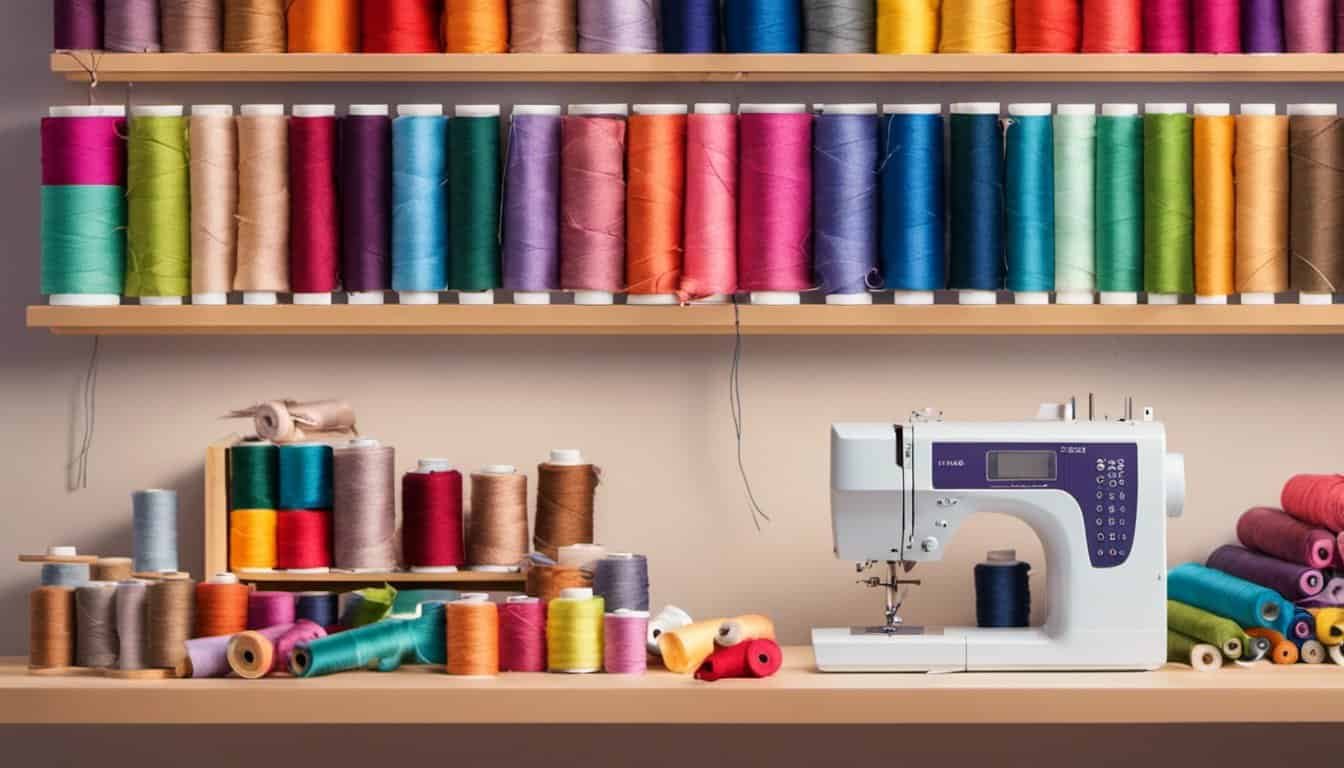
Box Pleats
Box pleats are a type of pleat that adds fullness to a garment while maintaining a tailored look. They are often used in skirts, dresses, and even home decor items. Box pleats can be sewn in different widths and depths, allowing you to play with the silhouette and structure of your projects.
Tools and Materials for Sewing
When it comes to sewing, having the right tools and materials is essential for creating beautiful and professional-looking projects. As an expert in all things sewing, embroidery, knitting, and crafts in general, let’s take a closer look at the tools and materials you’ll need to get started on your sewing journey.
Sewing Machine
A sewing machine is a must-have tool for any serious seamstress. It allows you to stitch fabric together quickly and efficiently, saving you time and effort. Look for a machine with adjustable stitch length and width, as well as a variety of stitching options to accommodate different fabrics and projects.
Needles
Having a selection of high-quality sewing needles is crucial for achieving clean and precise stitches. Choose needles based on the type of fabric you’ll be working with. For lightweight fabrics, use fine needles with a sharp point, while heavy-duty fabrics require thicker, stronger needles.
Thread
Thread is the backbone of any sewing project, holding everything together. Invest in good-quality threads that match the color and weight of your fabric. Polyester threads are versatile and durable, while cotton threads are perfect for natural fibers. Keep a variety of colors on hand to match different projects.
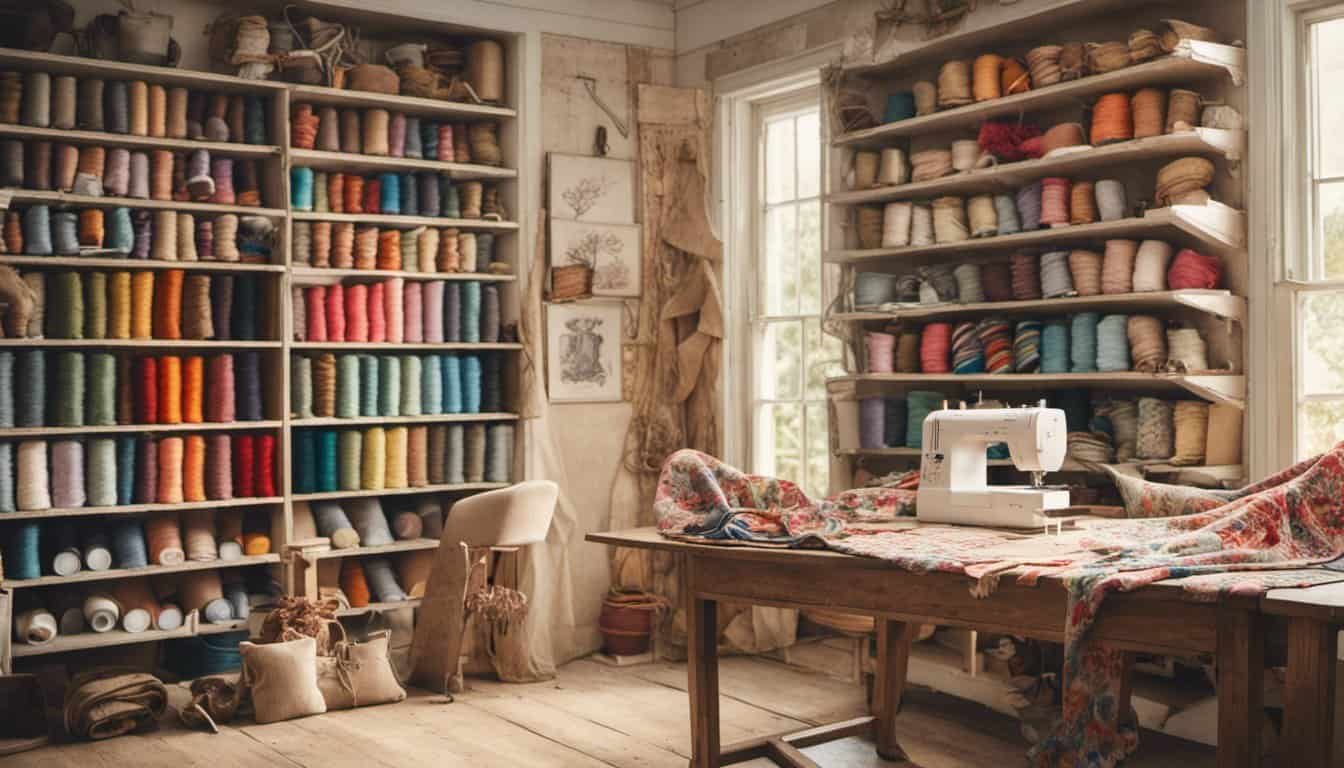
Fabric
Selecting the right fabric is key to achieving the desired look and feel of your creations. Consider the weight, drape, and stretch of the fabric, as well as the prints and colors that speak to your personal style. Look for fabrics that are suitable for the specific project you have in mind, such as cotton for clothing or upholstery fabric for home decor.
Scissors
Having a pair of sharp, quality scissors is essential for cutting out fabric and trimming seams. Invest in a pair of fabric shears specifically designed for cutting fabric. Additionally, keep a small pair of embroidery scissors handy for precise trimming and snipping threads.
Pins and Needles
Pins and needles are essential for holding fabric in place and creating temporary markings. Use straight pins with glass heads to secure your fabric during sewing, and have a variety of needle types, including sharps and ballpoint, for different sewing techniques.
Tips for Beginning Sewers
If you’re new to sewing, welcome to the wonderful world of creativity and craftsmanship! Sewing is not just a hobby, it’s an art form that allows you to tap into your imagination and bring your ideas to life. Whether you’re interested in sewing clothes, home decor, or accessories, here are some helpful tips to get you started on your sewing journey:
- Start with simple projects: As a beginner, it’s important to start with simple sewing projects. This will help you build your skills and confidence before taking on more complex designs. Start with basic items like cushion covers, tote bags, or simple skirts. As you gain experience, you can gradually move on to more intricate projects.
- Invest in a good beginner sewing machine: While hand sewing is a valuable skill, investing in a sewing machine will make your sewing experience much more efficient and enjoyable. Look for a beginner-friendly sewing machine that offers easy-to-use controls and basic stitching options. You don’t need all the fancy features just yet!
- Get the right tools and materials: Having the right tools is crucial for successful sewing projects. Make sure to have a basic sewing kit that includes sharp fabric scissors, pins, needles, measuring tape, and a seam ripper. Additionally, choose fabrics that are suitable for beginners such as cotton or linen, as they are easy to work with and forgiving.
- Practice your stitching: Consistent stitching is key to achieving professional-looking results. Take the time to practice different stitching techniques such as straight stitching, zigzag stitching, and backstitching. This will help you develop a steady hand and improve the overall quality of your sewing.
- Don’t be afraid to make mistakes: Mistakes happen to everyone, especially when you’re starting out. Embrace the learning process and don’t be too hard on yourself. Instead, use your mistakes as an opportunity to learn and improve your skills. Remember, even the most skilled sewers started as beginners!
Exploring Advanced Sewing Projects
So you’ve mastered the basics of sewing, and now you’re ready to take your skills to the next level. In this section, we’ll delve into some advanced sewing projects that will push your creativity and craftsmanship to new heights. Whether you’re an experienced seamstress or just looking to challenge yourself, these projects will inspire you to create truly unique and impressive pieces.
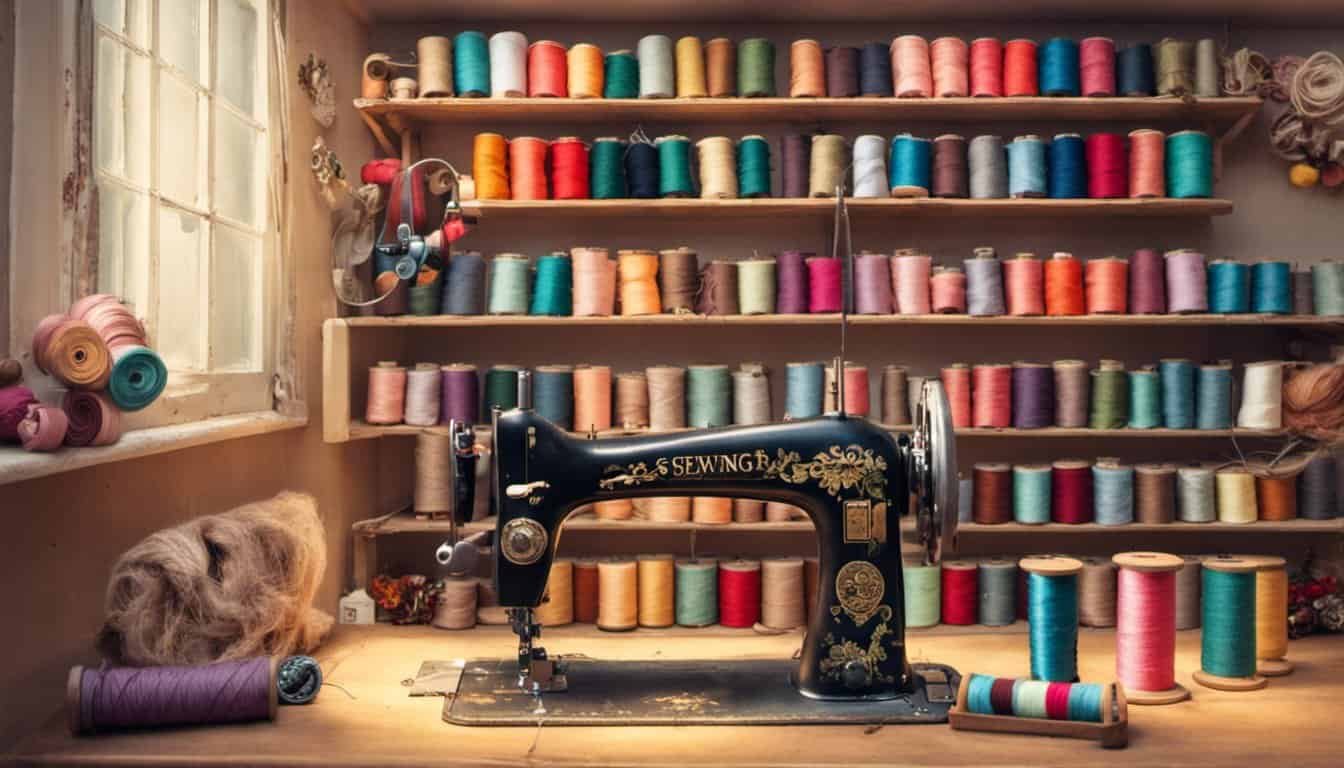
1. Customized Garments: One of the most exciting aspects of sewing is the ability to create garments that are tailored to your exact measurements and personal style. Advanced sewing projects like making a tailored blazer, a fitted dress, or a perfectly tailored pair of pants allow you to showcase your skills and create wardrobe staples that fit like a dream.
2. Intricate Embroidery: Embroidery is a centuries-old technique that adds elegance and beauty to any sewing project. Take your embroidery skills to the next level by experimenting with more complex stitch patterns and designs. Create stunning monograms, intricate floral motifs, or even recreate famous paintings on fabric. The possibilities are endless when it comes to embroidery.
3. Quilting Masterpieces: Quilting is not only a practical way to create warm and cozy blankets, but it’s also a form of artistic expression. Challenge yourself by designing and sewing intricate quilt patterns, experimenting with different fabrics and color combinations. Create quilts that are not only visually stunning but also tell a story or convey a specific theme.
4. Couture Sewing Techniques: Couture sewing techniques are all about achieving a flawless finish and impeccable attention to detail. Try your hand at techniques like hand-stitched hems, bound buttonholes, or adding boning for structure. These techniques will elevate your sewing projects to a whole new level of sophistication and craftsmanship.
5. Upcycling and Refashioning: Give new life to old garments by upcycling and refashioning them into something fresh and modern. Transform a vintage dress into a trendy skirt or repurpose old jeans into a stylish tote bag. Upcycling not only helps reduce waste but also allows you to showcase your creativity by breathing new life into old pieces.

As you venture into advanced sewing projects, remember to be patient with yourself and embrace the learning process. Don’t be afraid to make mistakes because they are an integral part of the journey towards mastery. The more you challenge yourself with these advanced projects, the more your skills will grow, and the more confidence you’ll gain
Upcycling and Repurposing with Sewing
If you’re looking for a way to combine your passion for sewing with your love for sustainability, then upcycling and repurposing with sewing is the perfect avenue for you. This creative approach allows you to breathe new life into old, unused items, reducing waste while creating unique and personalized pieces.
You’ll be amazed at what you can achieve with a little creativity and some sewing skills. Here are a few reasons why upcycling and repurposing with sewing are great options:
1. Sustainable Fashion
One of the biggest trends in fashion right now is sustainability. By upcycling and repurposing items, you can create fashionable garments that are not only unique but also environmentally friendly. Turn old t-shirts into trendy tote bags, transform dated jeans into stylish skirts, or combine different fabrics to create one-of-a-kind statement pieces.
2. Cost-effective
Sewing can save you money, and upcycling and repurposing take it to the next level. Instead of buying new materials, you can breathe new life into items you already own or find at thrift stores or in your closet. This means you can create incredible pieces without breaking the bank.

3. Customization and Personalization
With upcycling and repurposing, you have the freedom to customize and personalize your creations. Add embellishments, embroidery, or appliqués to make your piece truly one-of-a-kind. From adding lace to repurposing buttons, the possibilities are endless.
4. Reduce Waste
Every year, a staggering amount of textiles end up in landfills. Upcycling and repurposing with sewing help reduce this waste by giving old items a new lease on life. By transforming them into something new and useful, you’re contributing to a more sustainable future.
5. Creative Expression
Upcycling and repurposing allow you to unleash your creativity. Experiment with different fabrics, textures, and colors to create visually stunning pieces that reflect your unique style. With each project, you’ll develop your sewing techniques and explore new possibilities.
Remember, upcycling and repurposing may require some creativity and problem-solving skills, but the benefits far outweigh the challenges. So, grab your sewing machine, scissors, and imagination, and start transforming old items into something extraordinary.
With upcycling and repurposing, the possibilities are limitless, and your sewing skills can truly shine

Sewing for Home Decor and Fashion
When it comes to sewing, it’s not just about creating garments. Sewing also offers a wonderful opportunity to add your personal touch to your home decor. With your sewing skills, you can transform your living space into a reflection of your style and creativity. From curtains and throw pillows to table linens and wall hangings, the possibilities are endless.
For home decor sewing projects, you can choose from a variety of fabrics, colors, and patterns to complement your existing decor or create a whole new look. You can also experiment with different sewing techniques, such as appliqué or smocking, to add decorative elements and textures to your creations. Imagine the satisfaction of having custom-made curtains that perfectly match your furniture or unique throw pillows that become conversation starters for your guests.
But sewing isn’t just limited to home decor. It also plays a major role in the world of fashion. Whether you’re a beginner or an advanced sewist, you can use your sewing machine to create stunning garments that fit your body and reflect your personal style.
With sewing, you have the freedom to choose the fabric, pattern, and design that you love. You can create one-of-a-kind dresses, skirts, tops, or even accessories like bags or hats. Sewing enables you to express your creativity and showcase your individuality through your fashion choices.
Not only will you have the satisfaction of wearing something unique and handmade, but you’ll also have the freedom to customize the fit and details of your garments. No more settling for ill-fitting store-bought clothes. With sewing, you can create a wardrobe that truly reflects your personality and flatters your body.
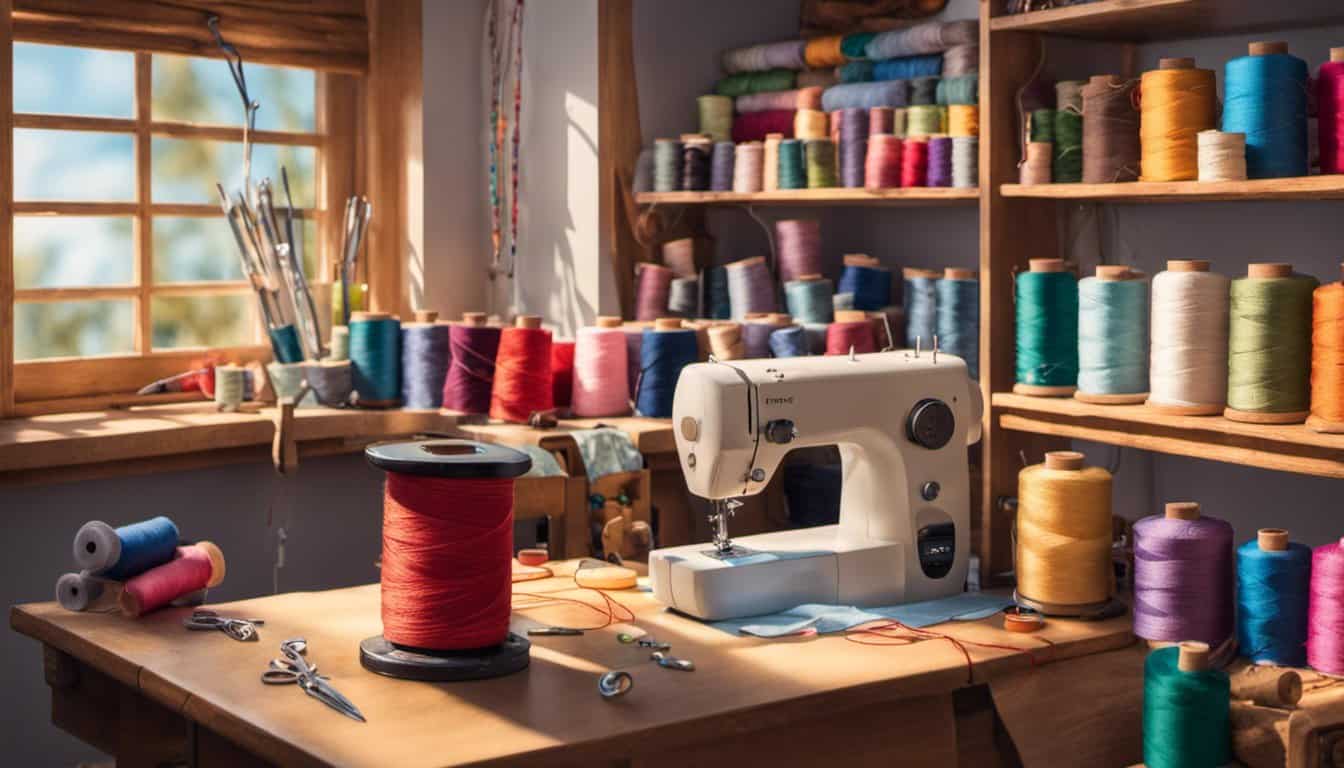
So whether it’s sewing for your home or sewing for fashion, the possibilities are endless. Let your imagination run wild, experiment with different fabrics and techniques, and have fun bringing your creative visions to life. With sewing, you have the power to transform ordinary fabrics into extraordinary pieces that are a true reflection of your skills and artistic expression.
Sewing as a Therapeutic Activity
Sewing is not just a hobby or a craft, it can also be a therapeutic activity that promotes relaxation and mindfulness. Engaging in sewing allows you to switch off from the stresses of daily life and focus on creating something beautiful with your own hands. In this section, we’ll explore how sewing can be a form of self-care and provide a sense of fulfillment and well-being.
The Meditative Qualities of Sewing
When you sit down at your sewing machine or immerse yourself in a hand-sewing project, you enter a state of flow. The repetitive motions of stitching and the rhythmic sound of the needle going through the fabric can be incredibly calming. This meditative quality of sewing can help reduce stress and anxiety, allowing you to find inner peace and tranquility.
Enhancing Mindfulness through Sewing

Sewing requires focus and attention to detail. As you concentrate on your sewing project, you become fully present in the moment, allowing your mind to let go of worries and distractions. This mindfulness practice can have a profound effect on your overall well-being, helping you to cultivate a sense of clarity and awareness.
Creating a Sense of Accomplishment
Completing a sewing project gives you a tremendous sense of accomplishment. Whether it’s a simple garment or a intricate embroidery design, seeing your creation come to life can boost your self-esteem and confidence. It’s a tangible reminder of your creativity and skill, which can provide a much-needed positive boost in your mood.
Seeking Community and Connection
Sewing can also be a social activity that brings people together. Joining a sewing group or participating in workshops and classes allows you to connect with like-minded individuals who share your passion for crafts. Building relationships and fostering a sense of belonging within the sewing community can provide emotional support and a sense of camaraderie.

Finding Personal Expression and Creativity
Sewing gives you the freedom to express yourself and tap into your creative side. Through fabric choices, color combinations, and design decisions, you can create something that truly reflects your personality and style. Engaging in sewing as a form of self-expression can be deeply satisfying, as it allows you to showcase your uniqueness and individuality.
Incorporating sewing into your life as a therapeutic activity can have far-reaching benefits for your mental and emotional well-being. From the calming and meditative aspects to the sense of accomplishment and community connection, sewing can provide a sanctuary for self-care
Conclusion
Sewing is more than just a hobby or craft – it is an art form that allows you to explore your creativity and express yourself. From appliqué to French seams, bias binding to smocking, and box pleats, sewing techniques offer endless possibilities for adding decorative detail and achieving a polished finish.
To succeed in your sewing projects, it’s important to have the right tools and materials. Start with simple projects and invest in a good sewing machine if you’re a beginner. As you advance, you can take on more complex projects like customized garments, intricate embroidery, quilting, couture sewing techniques, and upcycling and repurposing.
Upcycling and repurposing with sewing not only allows you to create unique and personalized pieces, but also promotes sustainability by reducing waste. With sewing, you can embrace sustainable fashion, save money, customize your creations, and reduce your environmental impact.
Sewing isn’t limited to garments – it also allows you to add a personal touch to home decor. From curtains to throw pillows, table linens to wall hangings, sewing allows you to transform your living spaces into reflections of your personal style and creativity.
By engaging in sewing, you can also experience the therapeutic benefits of relaxation, mindfulness, and a sense of accomplishment. Sewing offers a way to disconnect from the stresses of daily life and focus on creating something beautiful with your own hands.
So, whether you’re sewing for fashion or home decor, sewing
